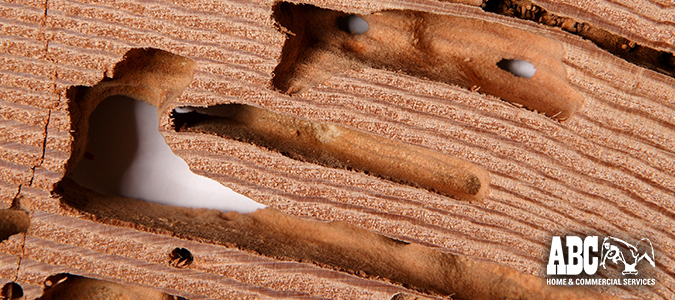Termites are easily one of the most expensive types of pest infestations that can plague your home. They can chew away at important structures undetected for weeks and cause major damage to your property.
The best way to help prevent termite damage is to become more educated about the pests causing it. Here is our comprehensive guide covering what you need to know about drywood termites from ABC Home & Commercial Services.
What Do Drywood Termites Look Like?
Unless you are an extermination expert, correctly identifying insects can be tricky and confusing. Sometimes it can help to compare the insects on your property to pictures on the internet, but many species have a range of different colors and sizes that are considered normal. Here are some of the key characteristics of drywood termites to help you identify them.
- Size – Drywood termites differ in size according to their role in the colony. Soldier termites are typically around three eights of an inch long, while reproductive termites are half an inch long.
- Color – Most drywood termites are pale brown, but they can also look dark brown, tan, cream, or gray. They can also look partially transparent in any of these shades.
- Body – Look for bugs with large mandibles and teeth protruding from their heads, six legs, and long cylindrical bodies.
- Wings – The swarmers in the colony will have two sets of wings. After they have finished swarming, almost all drywood termites completely shed their wings. So look for unattached wings rather than searching for them on the insect body.
Facts About Drywood Termites
- They are loud.
Soldier termites make clicking noises to warn the colony about potential danger as they tunnel through wood. If you have a particularly bad infestation, you may be able to put your ear up to the wall and hear them communicating.
- They respond to rock music.
Studies have shown that termites eat through wood twice as quickly when they are exposed to rock music. The theory behind this phenomenon is that their bodies respond to vibrations at certain frequencies in order to assess a food source. Since rock music produces a higher volume of vibrations at the right frequency, termites instinctively snack harder.
- They consume wood from the inside out.
Rather than starting on the exterior of a piece of wood and slowly eroding it away, drywood termites tunnel into the wood until it is hollow inside and only a thin layer of timber or paint is left.
- They can cause trees or structures to collapse.
Unlike other species of termites, drywood termites tunnel across the grain of wood eating both soft springwood growth and hard summerwood growth. After they completely destroy the integrity of the wood from the inside, it can collapse.
Signs of Drywood Termite Damage
If you suspect you might have a drywood termite infestation, there are some signs you can observe before you call an exterminator.
- Buckling wood
- Shelter tubes
- Swollen floors or ceilings
- Difficulty opening warped door or window frames
- Piles of small feces near wooden areas
- Hollow sounds when you tap on walls
- Clicking sounds coming from walls
- Tunnels in your wood if you carefully peel back a layer
How to Get Rid of Drywood Termites
We are happy to share DYI pest prevention and control tips with our customers, but when it comes to termites, we don’t recommend it. If you find evidence of termites in your home, call pest control professionals right away and minimize the damage to your property as much as possible.
If you notice signs of drywood termites in your home, call a professional extermination service right away. Count on ABC Home & Commercial Services to eliminate your termite trouble once and for all.

